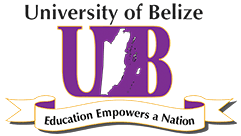- Version
- Download 382
- File Size 1.70 MB
- File Count 1
- Create Date September 24, 2019
- Last Updated October 18, 2019
UB Imprint Vol 60: UB Transforming Belizean Natural Marine Heritage through Science in Action
Coral reefs are an indispensable part of our natural heritage. They provide protection from storms, habitats for marine life, and livelihoods for substantial numbers of Belizeans. Today, our reef-building species are threatened by unsustainable anthropogenic practices and the overwhelming effects of climate change. Coral cover on our reefs has declined drastically, and with it, their ecosystem services. With this impending fear of loss of our reefs, academics, scientists, researchers, protected areas managers, and even environmental enthusiasts are exploring, practicing, and applying different conservation and ecological principles to increase the resilience of our reefs.
The University of Belize Environmental Research Institute has undertaken an effort to increase genetic diversity on reefs by facilitating coral sexual reproduction for coral reef restoration. This exciting application of scientific principles was shared by Dr. Anastazia Banaszak from the Universidad Nacional Autónoma de México: Institute of Marine Sciences and Limnology in 2016. Since then, at the Calabash Caye Field Station in the Turneffe Atoll, genetic material of species of Acropora palmata, commonly known as Elkhorn, and Orbicella faveolata, commonly known as Mountainous Star Coral or Boulder Coral, were collected to facilitate generation of genetically unique coral sexual recruits. With each passing year, there have been successes and lessons learnt to allow for improvement of the coral rearing process.
The UB ERI team along with four newly minted scientific divers in training students, collected coral spawn, fertilized gametes and nurtured new coral babies. Four of the students: Gabriela Ugarte, Daniel McLaughlin, Stavros Bardalez and Reynaldo Ortega, are from the first class of underwater research methods in the new Bachelors in Marine Biology who received training in scientific diving, to safely and efficiently conduct underwater research. The underwater research methods (MBIO2303) course was delivered by Dr. Leandra Cho-Ricketts, the dive safety officer and diving instructor for UB’s scientific diving program with the assistance of UB ERI’s two dive masters, Ninon Martinez and Alexander Navarro. The students were certified as rescue divers and taken through rigorous training, testing the limits of their physical capabilities to ensure that they have what it takes to work competently underwater. They spent seven days under the sea learning to save themselves and others, to navigate and recover items underwater, and to use a variety of underwater techniques to survey coral reefs, fish and other marine organisms.
We are proud to welcome them as UB’s first cohort of scientific divers in training. All they need to be full scientific divers is to complete a theory exam and obtain twelve research dives under their belts. This team of four student divers that accompanied us on the coral restoration work, had the priceless opportunity to put their newly found skills to practice. They saw and experienced first-hand the application of diving and research skills gleaned from their course, through the experiences of night diving and also laboratory work to maintain living specimens.
Acropora palmata are known to spawn between the second and eighth nights after the August moon in Mesoamerican Region. In anticipation of this, the UB ERI staff, interns, and University of Belize student volunteers headed out to Turneffe to monitor coral for the release of their gametic material for collection. The nights brought worms, surges, and mysterious crustacean bites in mysterious places, but on the sixth night after the full moon on August 21st, between 8:00-9:40 pm, what’s described as a gentle yet incredible upside-down snowfall, coral spawning, made time stop. The beauty and awe-inspiring wonder of this event can’t be captured in any nature documentary. Immediately after the first moments, everyone was put to work, students were diving collecting the spawn and transferring it to snorkelers who quickly shuttled the bundles to the boat, where the gametes from different coral colonies were mixed to form new genetic identities. When spawning ended, everyone headed back to station to prepare the wet lab for the introduction of these embryos.
Over the next two weeks, like with newborns, our Marine Biology and our lone ranger nursing student and NRM graduates were up all night keeping the “baby corals” alive. Tracking phases of development and keeping conditions at the rustic station hospitable for their survival kept all busy and excited. When the coral larvae started seeking settlement in their “forever-homes,” a visit to the coral nursery to get settlement substrates brought excitement to the station. A fully identifiable, genetically distinct Acropora palmata, at least 5 cm in height, was thriving in the nursery. This marked the first coral recruit produced by facilitated coral reproduction in Belize by Belizeans. This discovery motivated all to continue with the good work and come up with more exciting plans and adaptations to restoration science.
We are looking forward to teaching more students about these techniques and the importance of science in our country for natural resource management and adapting to our reality of climate change. Complacency is not an option at the University of Belize; action is how we adapt and address our national concerns.





